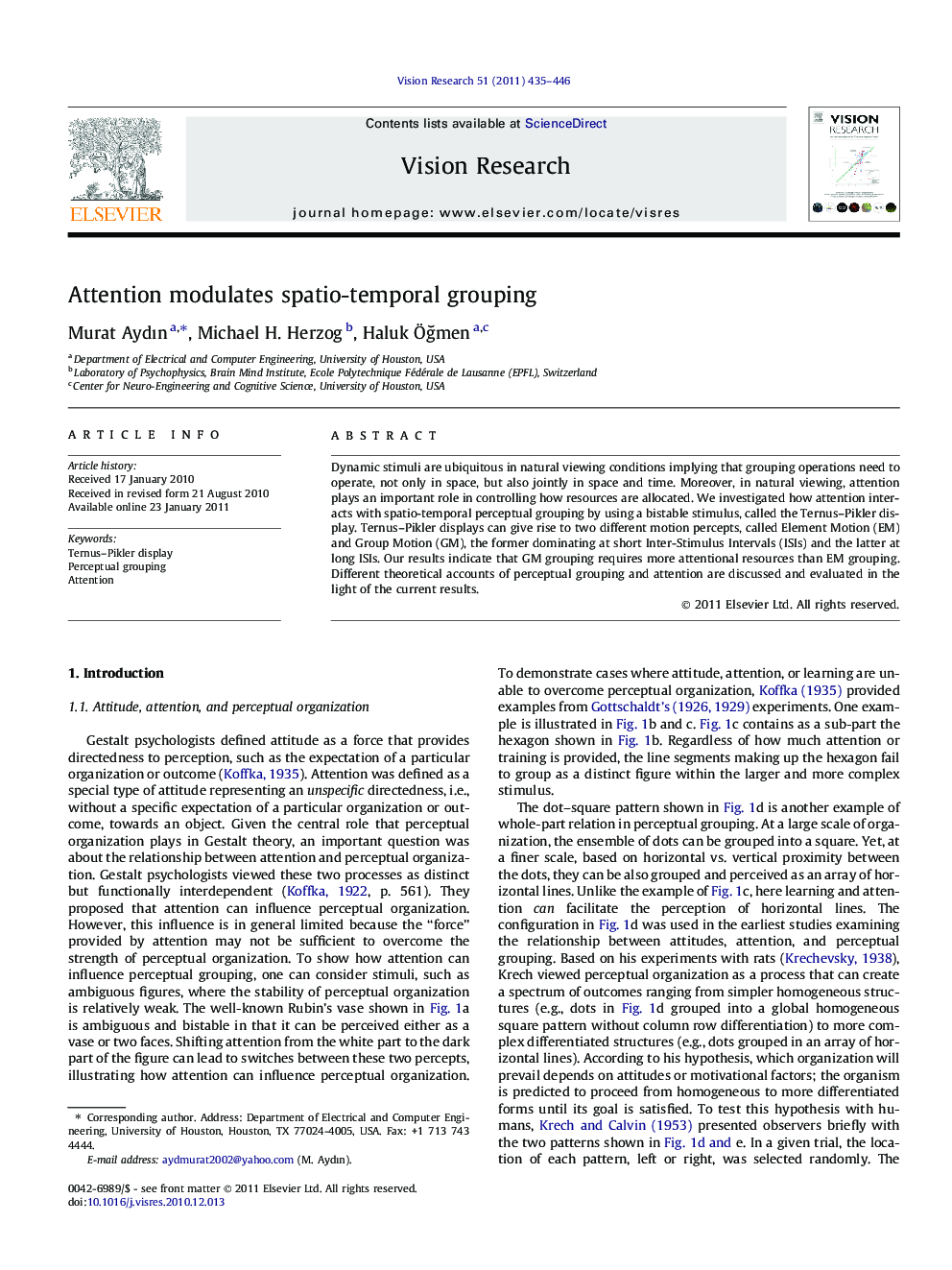| Article ID | Journal | Published Year | Pages | File Type |
|---|---|---|---|---|
| 4034240 | Vision Research | 2011 | 12 Pages |
Dynamic stimuli are ubiquitous in natural viewing conditions implying that grouping operations need to operate, not only in space, but also jointly in space and time. Moreover, in natural viewing, attention plays an important role in controlling how resources are allocated. We investigated how attention interacts with spatio-temporal perceptual grouping by using a bistable stimulus, called the Ternus–Pikler display. Ternus–Pikler displays can give rise to two different motion percepts, called Element Motion (EM) and Group Motion (GM), the former dominating at short Inter-Stimulus Intervals (ISIs) and the latter at long ISIs. Our results indicate that GM grouping requires more attentional resources than EM grouping. Different theoretical accounts of perceptual grouping and attention are discussed and evaluated in the light of the current results.
Research highlights► Attention modulates the balance between competing spatiotemporal groupings. ► Group-motion requires more attentional resources than element-motion. ► Attention and grouping are distinct but functionally interdependent processes.
